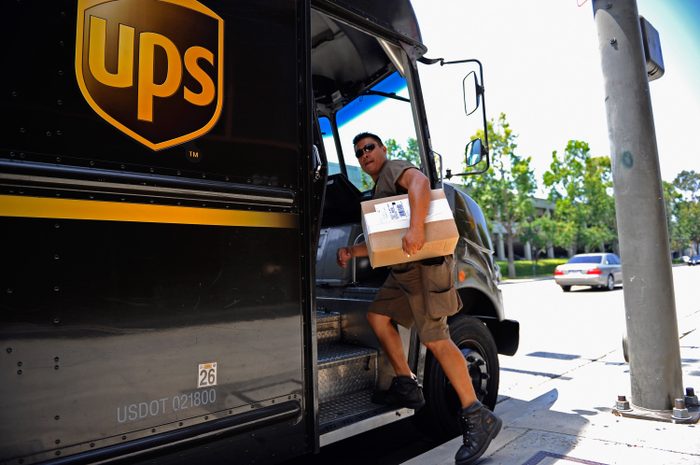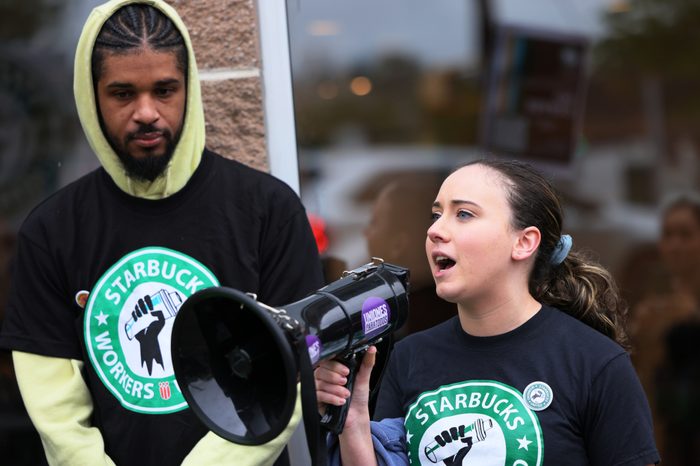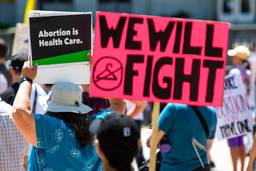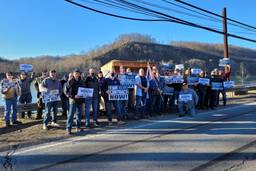The Union Membership Rate Has Dropped to a Historic Low. It Doesn't Have to Be This Way.
A new report offers a grim look at that the state of labor nationally, but that’s not the whole picture.
C.M. Lewis

The Bureau of Labor Statistics released its annual union membership report January 19. The report shows a nationwide decline in the percentage of wage and salary workers who are union members, from 10.3% in 2021 to 10.1% in 2022 — the lowest union membership rate on record since comparable data was first collected in 1983, when the union membership rate was 20.1%, according to the Bureau of Labor Statistics (BLS).
But the annual report, compiled with the use of the Current Population Survey, leaves out what some labor advocates say is a critical piece of information: evidence suggests an estimated 60 million workers would vote to join a union if they could.
“The fact that tens of millions of workers want to join a union and can’t is a glaring testament to how broken U.S. labor law is,” the Economic Policy Institute asserts in response to the BLS report. “It is urgent that Congress pass the Protecting the Right to Organize (PRO) Act and the Public Service Freedom to Negotiate Act. State legislatures must also take available measures to boost unionization and collective bargaining.”
According to worker advocates, the PRO Act would reform wide portions of the National Labor Relations Act that make it difficult for workers to organize. It would also override so-called right-to-work legislation. The less heralded Public Service Freedom to Negotiate Act, most recently reintroduced by Rep. Matt Cartwright (D-Pa.) in 2021, would federally mandate that states provide bargaining rights for public sector employees.
According to the BLS report, 14.3 million wage and salary workers were members of unions in 2022, an increase of 273,000 from 2021. Overall, there were 16 million wage and salary workers represented by a union in 2022 (including both union members and those who report no union affiliation but whose jobs are still covered by a union contract), an increase of 200,000 between 2021 and 2022.
But nonunion job growth outpaced these modest increases. Between 2021 and 2022, the total number of wage and salary workers increased by 5.3 million, which the report notes are “mostly among nonunion workers.” “This disproportionately large increase in the number of total wage and salary employment compared with the increase in the number of union members led to a decrease in the union membership rate,” according to the report.
“If a unionized company like UPS increases its employment and nothing else changes, then the unionized share of all workers goes up,” says Ruth Milkman, chair of the labor studies department at the City University of New York. “If a company like Amazon, which is 100% nonunion — notwithstanding Staten Island — expands, then the unionized share of all workers declines.”
New organizing, according to Milkman, typically accounts for only a portion of new membership. Year to year, growth in union membership is often outpaced by an expanding job market.
In the private sector, the number of union workers increased by 193,000 but the overall rate declined slightly by 0.1%. Private sector industries with high rates include motion pictures and sound recording industries at 17.3%. In the public sector, the rate continued to decline in 2022 and dropped 0.8% to 33.1%. Local government, which boasts a 38.8% union membership rate — think firefighters, teachers, and police — is the highest in the public sector.
Although some occupations and sectors — such as telecommunications — saw substantial declines in the percent of employees represented by unions (it decreased from 13% to 9.3%), there are some areas with growth. Within production, transportation, and material moving occupations — which encompasses approximately 350,000 UPS workers heading toward a potential national strike this summer — there was an increase of employees represented by unions from 13.1% to 13.4%.

The BLS report also highlights that “Black workers continued to have a higher union membership rate in 2022 (11.6%) than white workers (10%), Asian workers (8.3%) and Hispanic workers (8.8%)” and that Hawaii (at 21.9%) and New York (at 20.7%) have the highest union membership rates for states across the country. The Carolinas have the lowest, with South Carolina at 1.7% and North Carolina at 2.8%.
The report does show the median usual weekly earnings for full-time union wage and salary workers in 2022 was higher than their nonunion counterparts, at $1,216 and $1,029, respectively. Union density also substantially increased in certain states that historically have lower rates of union membership; density rose from 6.9% to 8.4% in Alabama, and coverage rose to 10.6% from 9.1% in New Mexico, potentially reflecting the impact of New Mexico’s pro-worker overhaul of public sector bargaining laws.
Although the report shows some warning signs for unions, it does not capture the broader picture of worker power, according to Robert Bruno, director of the labor studies program and a professor of labor and employment at the University of Illinois Urbana-Champaign. “This [report] isn’t picking up things like workers’ centers, or not formally collective bargaining [National Labor Relations Act] type unions, but in fact associations that do represent workers,” says Bruno, who pointed to achievements like the Fight for $15 as nontraditional means of building worker power not captured by the survey.
The report should also, Bruno says, be contextualized within a broader economic landscape. “We had 2020, we had a terrible recession,” Bruno says. “We’ve now got the Fed, from my perspective, punishing workers as rapidly as they can and as significantly as they can by continuing to raise interest rates, even when wages really aren’t responsible for inflation.”
Milkman agrees that the BLS survey results may be at odds with the popular perception of a profound organizing wave, and Bruno notes the numbers seem to indicate that labor still isn’t getting the traction union advocates have been hoping for.
Milkman, Bruno and others who spoke with In These Times about the survey identified structural problems — such as offshoring, a sophisticated union-busting industry and a frustrating regulatory framework under the National Labor Relations Act — as key barriers to organizing at the scale necessary to substantially increase union density. Celine McNicholas, director of policy and government affairs and general counsel for the Economic Policy Institute, points to the estimated 60 million workers who would vote for union representation as evidence that the system isn’t working.
“There’s just a huge discrepancy between desire and the ability to actually have [union] representation in your workplace,” says McNicholas. She adds that the law actually provides an incentive for employers to violate workers’ rights — in the sense that, companies that violate those rights face no real monetary penalty for doing so. “The penalties aren’t there … [the National Labor Relations Act] is a law that really lacks teeth,” McNicholas explains.
Brian Murray, a worker-organizer with Starbucks Workers United — part of a wave of unionization among coffeeshop workers, including some 260 Starbucks stores in 2022—says unions need to be laser-focused on growth.

“We need labor organizing to be the first priority of every union in the country right now if we actually want to build the movement, and not just hold on to the contracts we have right now,” Murray says.
Murray, who helped lead the initial wave of Starbucks organizing in Buffalo, N.Y., says that part of the equation is trusting workers to lead campaigns themselves. “We’re creating thousands of new organizers around the country through this campaign,” he says, noting that Starbucks Workers United builds worker committees to be their own organizers. “It’s critical because these people are going to go onto other jobs. They’re going to assist with other organizing efforts, and we need new blood in the labor movement.”
Some advocates believe that focusing on building union power through worker organizing, rather than first seeking policy changes, holds the key to reversing the decline of union density.
Jane McAlevey, a senior policy fellow of with the Labor Center at the University of California, Berkeley, puts the problem with union strategy bluntly: “It’s a lack of ambition and it’s risk aversion, but fundamentally, it’s a lack of faith in workers.” McAlevey argues labor’s priority should be organizing that targets strategic sectors with hard-to-replace workforces.
“We’re relying on the Democrats and Congress to change labor law,” McAlevey says. “Come on! When we do that, it’s a cop-out and it’s an excuse. We’re not in control of that. How we run campaigns and how we negotiate contracts — that’s what we’re in control of.
“My life argument is: Let’s fix what we can fix and stop trying to fix everything else that we can’t fix.”
C.M. Lewis is an editor of Strikewave and a union activist in Pennsylvania. Follow him on Twitter: @thehousered







